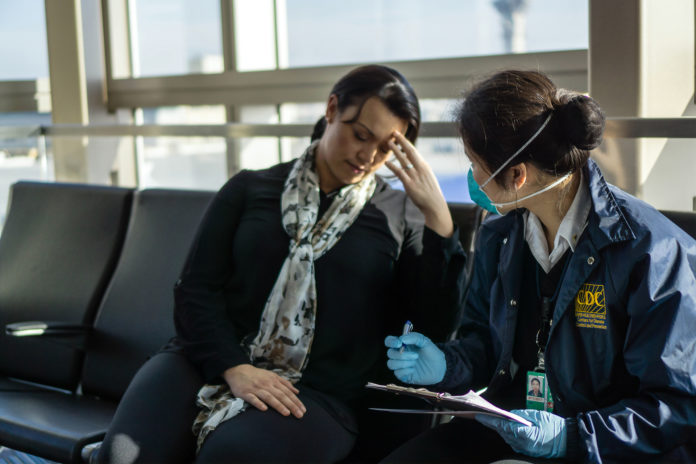Crohn’s Symptoms 101: All You Need to Know to Spot the Disease
In 2015, around 3 million (1.3%) American adults were diagnosed with inflammatory bowel disease (IBD). Either with ulcerative colitis or Crohn’s disease. Crohn’s affects everyone differently. It is a long-lasting condition that has a negative impact on the digestive tract. Although there is no cure, the currently available treatment can manage Crohn’s symptoms or stop them from coming back.
If you want to know how to recognize the illness, you’ve come to the right place. We prepared a practical manual that will guide you through the most prevalent symptoms. Including the various ways, the disease can affect your GI tract.
How to Recognize Crohn’s Symptoms?
Crohn’s, also known as enteritis or ileitis can impact any part of the gut. But, in most cases, it causes inflammation in the small intestine. Crohn’s symptoms are quite debilitating, uncomfortable, and painful. If left unmanaged, they could put your life in danger.
Since this is a chronic condition, patients often experience moments when the symptoms are most active. These are known as flare-ups, which are then followed by remission. Recognizing Crohn’s symptoms can help you spot the problem. But, you will need a doctor to get a diagnosis.
According to the National Institutes of Health, Crohn’s is formed by a correlation of clinical symptoms and signs. Based on their objective data, chronic diarrhea is the most common symptom. Other common findings include abdominal pain, weight loss, blood or mucus in the stool, and more.
Only a third of patients experience extraintestinal manifestations, mainly peripheral arthritis. Fistulae, a complication of Crohn’s disease, doesn’t happen too often. It can affect 35% of patients with the condition.
These symptoms and signs show how the disease is affecting the system and its impact on the patient’s quality of life. However, the severity of the flare-ups varies. You can’t predict when they will occur, but you can learn to recognize them.
Common Symptoms
With the disease, any segment of the large or small intestine can get irritated or inflamed. It might feature multiple segments or be continuous. In most patients, the illness is confined to the colon, which is a segment of the large intestine.
Crohn’s symptoms can become mild or severe. They tend to gradually develop. But, it’s not uncommon for them to appear without warning. When the symptoms subside, that’s when the body is going through a period known as remission.
Here are the most typical symptoms while the disease is still active. These include:
- Diarrhea
- Mouth sores
- Fever
- Cramps
- Abdominal pain
- Fatigue
- Weight loss
- Fistula (drainage or pain close to the anus)
Other Symptoms
While the illness is confined to the GI tract, it can have a drastic impact on your overall health and interfere with your other medical issues. Individuals with a severe case of Crohn’s experience more debilitating symptoms.
These might include:
- Kidney stones
- Anemia due to iron deficiency
- Inflammation of the joints, eyes, and skin
- Inflammation of the bile ducts or liver
- Delayed sexual development or growth ( in adolescents and children)
In extremely rare cases, these symptoms could get severe and lead to debilitating complications. Such as fissures, fistula, or a stricture. Fissures can appear due to tears in the anus lining. Those who experience this problem will notice blood in their bowels.
Fistula is another complication triggered by inflammation. It can form between the intestine and the skin, vagina, or bladder. It typically appears near the anus and requires urgent medical attention. A stricture also needs treatment. This complication makes the intestine become narrower and causes chronic inflammation.
When to Contact a Specialist?
If you notice a constant change in your bowel movements that resemble Crohn’s symptoms, see your doctor as soon as possible. These symptoms include:
- Blood in the stool
- Abdominal pain
- Vomiting and nausea
- Constant diarrhea that doesn’t subside with over-the-counter medication
- Fever that doesn’t go away in a day or two
- Unusual weight loss
According to experts, patients with IBD will experience some level of pain from their illness. This is known as typical pain and doesn’t cause any severe symptoms. But, when the pain and discomfort get gradually worse and accompanied by vomiting, diarrhea, fever, and extreme bloating, that’s when you need a doctor. This can be easily recognized by the sharp and sudden pain together with the lack of bowel movements.
How Will a Doctor Diagnose My Condition?
Your healthcare provider will do a series of tests to see whether or not you have the condition. In most instances, they will take a stool and a blood test. The blood test will indicate infection or inflammation. While the sample of your stool can help find the parasites or bacteria that might be affecting your system.
If more tests are necessary, colonoscopy becomes the go-to choice. The doctor will use an endoscope to examine the colon and can take a tissue sample. This is to make sure the body doesn’t show any signs of inflammation. For more detailed images of the digestive tract, you might need to do a CT scan. If you do have Crohn’s, then the doctor will suggest adequate treatment. Primarily antidiarrheal medication and antibiotics.
Final Thoughts
Knowing when to contact your GP can help get your condition under control. By learning how to recognize the symptoms, you will know when is the right time to seek treatment and control the flare-ups. Now that you know exactly what you are dealing with, you will have an easier time getting your health back on track.
References
https://www.cdc.gov/ibd/data-statistics.htm
https://www.ncbi.nlm.nih.gov/pmc/articles/PMC4622286/
https://www.mayoclinic.org/diseases-conditions/crohns-disease/symptoms-causes/syc-20353304
https://www.crohnscolitisfoundation.org/what-is-crohns-disease/symptoms
https://www.verywellhealth.com/when-to-call-the-doctor-about-your-ibd-1942610
https://my.clevelandclinic.org/health/diseases/9357-crohns-disease



